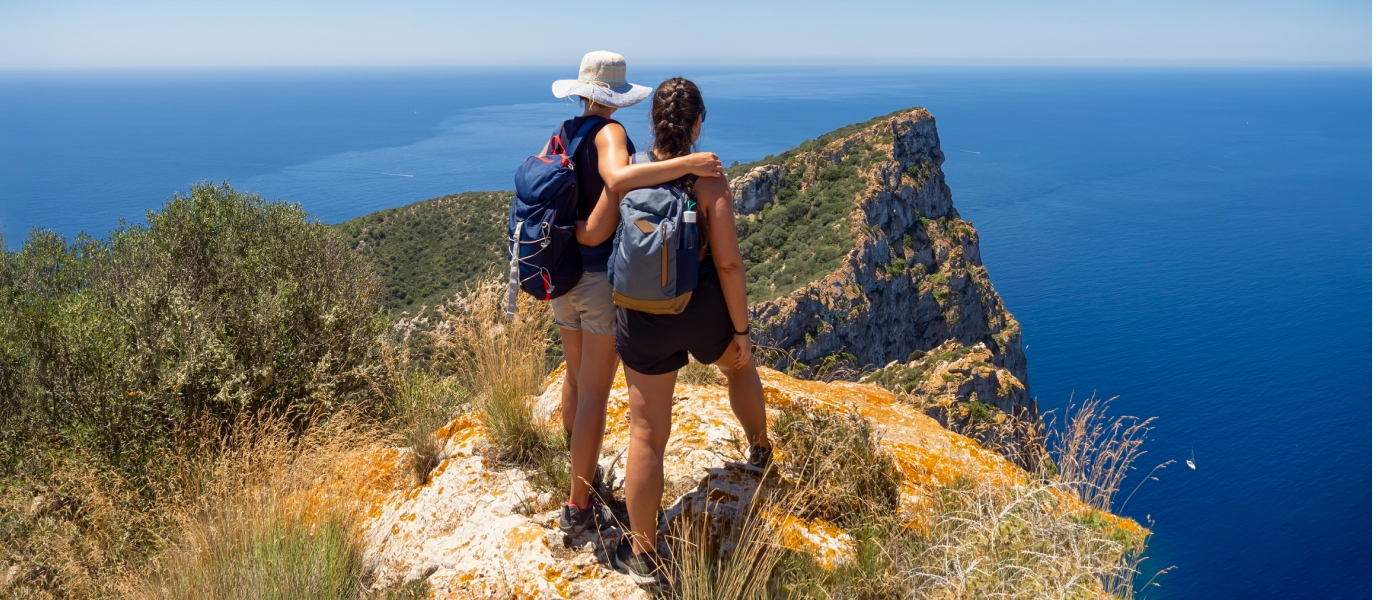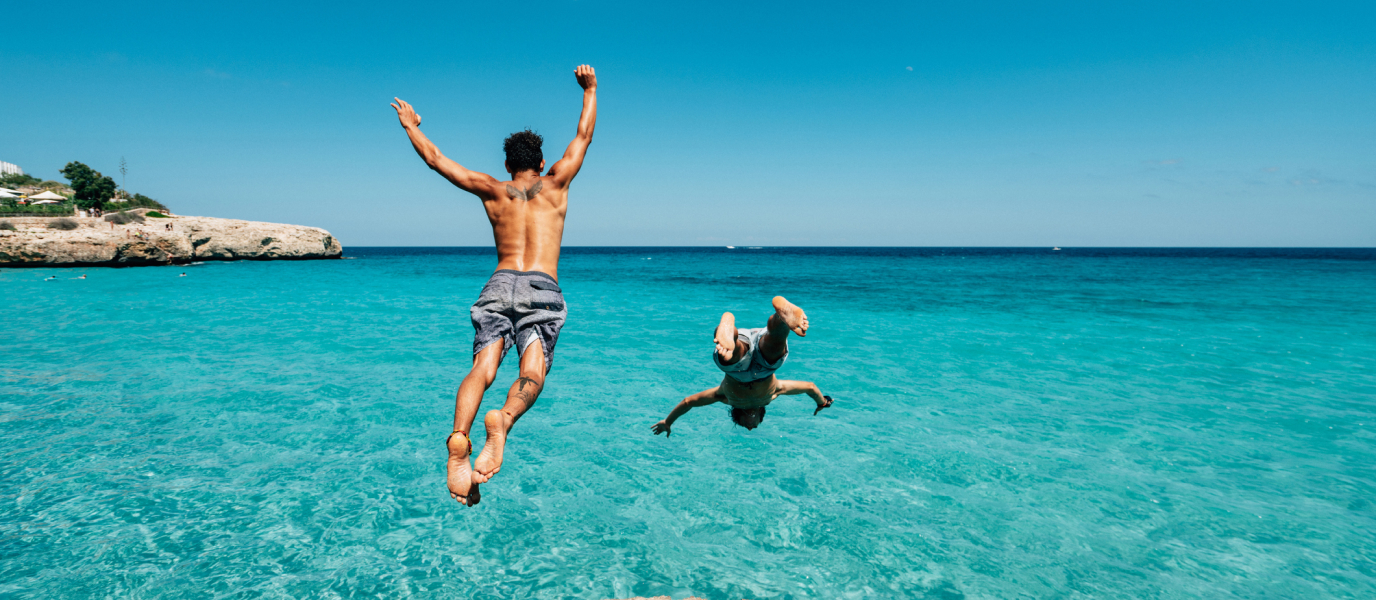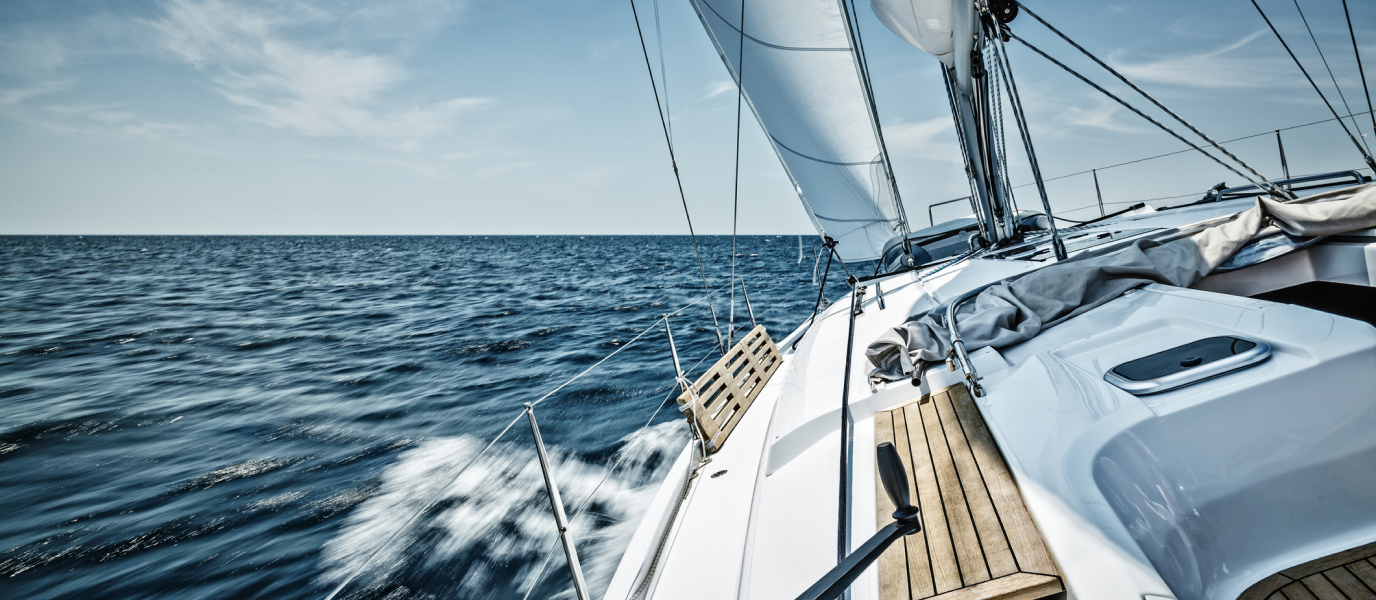Hiking enthusiasts are in luck: Majorca is much more than just sea and beaches. The island of Majorca is also defined by the paths and trails that go through towns and mountains and that delight all the travellers who like to walk through nature, discover new landscapes, animals and plants and soak up local history: many of the paths, today enabled for trekking, date from the Arab period or were later recovered by smugglers to carry out their misdeeds.
Coves, cliffs, nature reserves, mountain ranges and forests, together with history and popular legends, as well as pleasant temperature throughout the year, make the island of Majorca an ideal destination for organising walking excursions of one or more days. Not to mention that there are options suitable for everyone, from families travelling with children to great adventurers in search of bigger challenges.
Looking for a good hiking trail on the island? Fortunately, there are dozens of options, but there’s not need to feel overwhelmed: in this article we have selected some of the most popular and interesting hiking routes in Majorca.
The Archduke’s Path
Without a doubt, the Archduke’s Path is one of the best known and most popular routes for different reasons. One of the reasons is because it is easily accessible from the island’s capital. The second but no less important, is the spectacular views it offers both of the Mediterranean and of the Tramuntana mountain range, declared a World Heritage Site by UNESCO.
It is also convenient because it is a circular route that starts and ends at Valldemossa and has its peak at the summit of the Puig del Teix massif. The interesting thing about this trail is that it was built by Archduke Ludwig Salvator of Austria (hence the name by which it is known), a noble foreigner who, after falling in love with the island, dedicated part of his life and fortune to promoting tourism. In fact, the construction of this trail had no practical purpose other than to allow travellers to enjoy the landscapes of the road.
At just over 11 kilometres, it is a medium-difficulty hiking route. The path is not signposted but it is easily identified and can be covered in approximately 5 hours. It is essential to bring enough water and food.
Ruta de la Piedra en Seco in the Tramuntana mountain range
One option that requires greater commitment and dedication is the so-called Dry-Stone Route (also known as GR 221), a trail rehabilitated by the Council of Majorca that thoroughly crosses the Tramuntana mountain range and is designed to be completed in eight stages, although there are some variants. Today, there are 164 kilometres signposted on the main route and the road runs through the mountain ranges, coastal areas and forests (mainly oak), crosses towns and surrounds vestiges of the lives of the ancient inhabitants of the island, such as coal bunkers, huts, fountains or wells. Even shelters for smugglers and traffickers!
The name, dry-stone, is that of a typical Majorcan construction method that uses only stone (without mortar), which has been used for most of the paths on this route. This is such a unique system that it has also been recognised by UNESCO as Intangible Cultural Heritage.
As well as the rich landscape and anthropology, depending on your luck, during the route you may see falcons or black vultures or, more likely, wood pigeons or finches. Regarding mammals, wild goats are common and, from time to time, a hedgehog crosses the path. We recommend you organise the itinerary in advance: there are shelters where you can spend the night at the end of each stage but you also have the option of booking more comfortable accommodation. As a less challenging alternative, you can cover only one of the stages in one day.
Hiking in other parks and nature reserves of Majorca
In addition to the Tramuntana mountain range, there are other parks and nature reserves in Majorca that will delight nature enthusiasts. Allowing you to hike while enjoying the variety of landscapes and the richness of the island’s flora and fauna. All of the below have well prepared paths for hiking.
-
Mondragó Natural Park
The Mondragó Park, located in the south-west of the island, has a rich landscape, making it a privileged place for bird watching. There are four hiking routes available for walking or cycling. These are short simple routes (all of which take less than an hour) that can be done successively.
-
S’Albufera Natural Park
The largest wetland on the island is located in the Bay of Alcúdia and offers an extraordinary variety of flora and fauna. The visitor centre is located at the main entrance (you have to go through there to register as a visitor although admission is free), next to the Puente de los Ingleses and also has four different itineraries, all well signposted.
-
Sa Dragonera Natural Park
Located in the far west of Majorca, it is made up of the island of the same name, plus two islets and has more than 300 species of plants, 20 of which are endemic. You can get to the island by boat and, from there, you choose one of the three footpaths to go down, during which you can also enjoy an extraordinary view of the coast.







































































